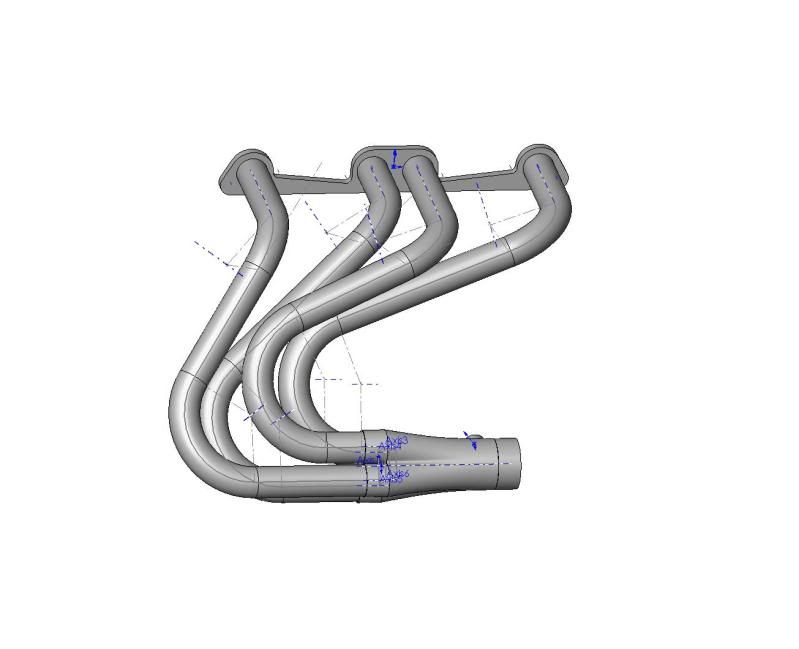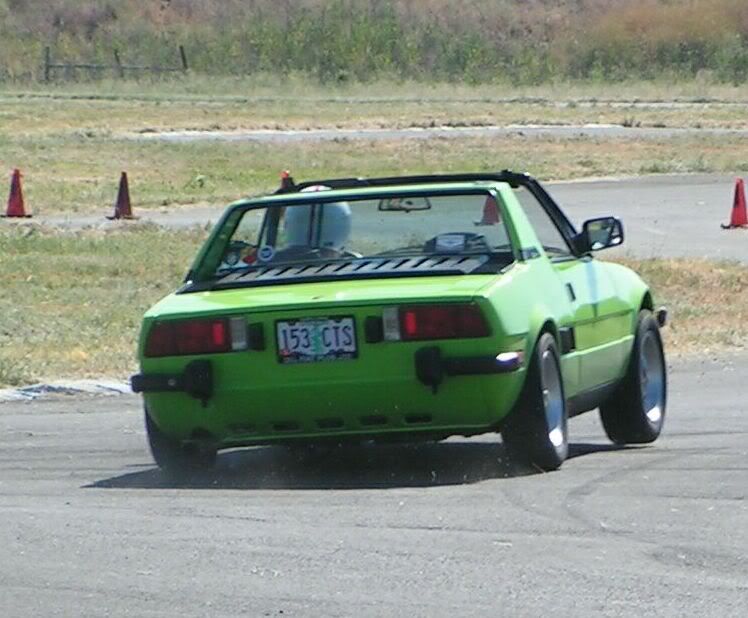Mark Plaia
True Classic
Hey guys, a little reality check here........
It is kind of a fun enterprise to kick around various header designs, etc. But give the manufacturers some breaks. Don't you think that they dyno tested their headers before getting them to market? Yes, they are compromise designs, but they need to fit as many combinations of the X as possible.
Custom designing and building a header is a time consuming and expensive enterprise. I have designed and built two, both for specialized and racing applications. I do not want to even try to calculate the costs.
I did not dyno tune them, but used some basic (very basic) principles to pull the designs together - Generous radii (because I had room), diameter to suit application (as a practical matter there is a choice of 3 - 1.25, 1.375, & 1.5inch),
length per guidelines set down by Colin Campbell in the 50's (valve head to exhaust tip). Primary length was chosen for a high winding 1300 fuel injection motor with a big valve head & pretty hot cam. A much more challenging aspect is getting the primaries (whatever length) even. Mine were about .50inch from shortest to longest. From my reading this is outstanding. Note too, that I had extra room behind the engine in both cases.
So, are you looking for that last 2% of performance on a street motor? As an esoteric enterprise, great. As a practical matter, why bother? On the street, will you really feel the torque difference between peak torque at 6000 versus peak torque at 6200 RPM?
I would say concentrate your efforts ($$$) on the little things - port matching, combustion chamber volume matching - you know, the basics. You will never win a race with a rice motor, so concentrate on the chassis so that you can outrun him in the curves.

1 3/8 pipe diameter, 26" length +/-.25", 3" bend radius, 2.25 collector, pipes and muffler. Note that the X that this goes on (il mela verde) has a heavily modified and angled rear firewall. This header will not fit any standard X.

This is the sort of handling you want. Springs and shocks are not radical at all. 175/275 lb/in coilover springs, front sway bar with center attached to the chassis, 5 way adjustable Tokico shocks on setting 4.
So ends my screed for today.
Ciao,
It is kind of a fun enterprise to kick around various header designs, etc. But give the manufacturers some breaks. Don't you think that they dyno tested their headers before getting them to market? Yes, they are compromise designs, but they need to fit as many combinations of the X as possible.
Custom designing and building a header is a time consuming and expensive enterprise. I have designed and built two, both for specialized and racing applications. I do not want to even try to calculate the costs.
I did not dyno tune them, but used some basic (very basic) principles to pull the designs together - Generous radii (because I had room), diameter to suit application (as a practical matter there is a choice of 3 - 1.25, 1.375, & 1.5inch),
length per guidelines set down by Colin Campbell in the 50's (valve head to exhaust tip). Primary length was chosen for a high winding 1300 fuel injection motor with a big valve head & pretty hot cam. A much more challenging aspect is getting the primaries (whatever length) even. Mine were about .50inch from shortest to longest. From my reading this is outstanding. Note too, that I had extra room behind the engine in both cases.
So, are you looking for that last 2% of performance on a street motor? As an esoteric enterprise, great. As a practical matter, why bother? On the street, will you really feel the torque difference between peak torque at 6000 versus peak torque at 6200 RPM?
I would say concentrate your efforts ($$$) on the little things - port matching, combustion chamber volume matching - you know, the basics. You will never win a race with a rice motor, so concentrate on the chassis so that you can outrun him in the curves.

1 3/8 pipe diameter, 26" length +/-.25", 3" bend radius, 2.25 collector, pipes and muffler. Note that the X that this goes on (il mela verde) has a heavily modified and angled rear firewall. This header will not fit any standard X.

This is the sort of handling you want. Springs and shocks are not radical at all. 175/275 lb/in coilover springs, front sway bar with center attached to the chassis, 5 way adjustable Tokico shocks on setting 4.
So ends my screed for today.
Ciao,
Last edited:









